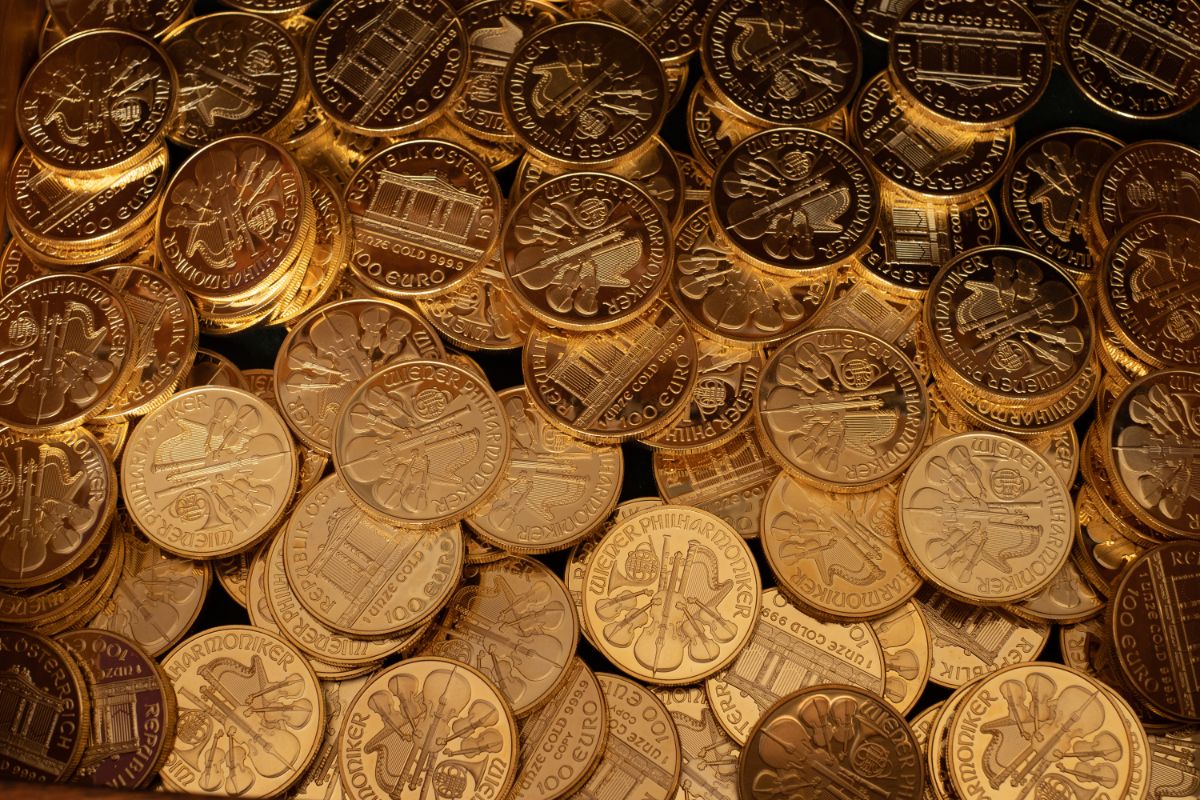When it comes to getting the cash value of gold bullion, there will be a few things that you’ll need to consider, one of the main ones being: how much it weighs.

Well, gold bullion has very specific definitions that everyone must abide by.
Gold is very valuable, mainly for its commodification as well as how malleable it is.
You can gold in many different forms, whether it is flakes or large and heavy ingots, they are available to buy and sell in many shapes and sizes.
But how much does gold bullion weigh? Why is it important that you know the value as well as the weight of gold bullion?
How does this affect its value in the marketplace? Well, if you want the answers to these questions and more, then we would certainly suggest that you keep reading.
Gold – How Much Does It Weigh?
When it comes to weight, gold is very precise. Gold has an atomic weight of 196.96657, which is measured in troy ounces.
A troy ounce weighs in at 31.1 grams or 0.07 pounds. This makes it one of the heaviest metals that you can find on the market.
The reason why it is so heavy is because of its density, coming in at 19.32 grams per cubic centimeter.
If you are dealing with a small amount of gold – such as a single flake of gold, for example – then you won’t have to deal with that much weight.
However, when you start piling on the gold, then you can be sure of having the weight stacking up very quickly.
Bars of gold can be very heavy indeed. We’ll now go into the specific weight category of gold bullion and see what makes it so definitive.
How Much Does Gold Bullion Weigh?
When you are weighing a standard gold bar, then you’ll expect the whole thing to come to around 12.4 kilograms.
This is the standard measurement that is used by banks across the globe.
However, you get some places where the standard weight of a brick is around 32.15 troy ounces, which works out to roughly 2.2 pounds.
But in truth, there are many methods of manufacturing gold bars and as a result, there are many changes in the weight of gold bars.
The weight of liquid gold, for example, will be much different from the weight of solid gold.
Even though both of these bars are made from gold, one will be heavier than the other.
Gold Bricks – How Large Do They Come?
Here are some of the dimensions that you might get for different weights of gold bar. Again, this will all depend on how they are made and what their weight is:
1 Troy Ounce
Width: 24 mm (0.95 inches)
Length: 42 mm (1.65 inches)
Depth/Thickness: 2 mm (0.08 inches)
3.22 Troy Ounce
Width: 31 mm (1.22 inches)
Length: 55 mm (2.17 inches)
Depth/Thickness: 3 mm (0.12 inches)
32.15 Troy Ounce
Width: 40 mm (1.58 inches)
Length: 80 mm (3.15 inches)
Depth/Thickness: 18 mm (0.71 inches)
400 Troy Ounce
Width: 94.5 mm (3.72 inches)
Length: 272 mm (10.7 inches)
Depth/Thickness: 51.5 mm (2.03 inches)
Gold Bricks – The Most Common Buyers

There are plenty of places where you can buy gold bricks and there are plenty of reliable and trustworthy gold brick sellers all around the world.
Central banks will often sell and lend gold bullion (see also ‘What Is Bullion Gold?‘). If there is a sharp increase in the amount of gold on the market, then its value will decrease.
A bank might also loan gold to a mining company to allow it to finance a particular project. The mining company will then repay this loan using the profits that it has made from its mining ventures.
What Are Cast Gold Bricks?
This type of gold is often known as melted gold and is created when you melt the gold down into liquid and pour it into a mold.
This brick has been around for 6,000 years and is the most common form of gold.
Often a crucible is used to melt gold into a liquid state before it is poured into the required mold.
The dimensions of the gold bar will differ, as we have mentioned above.
The gold will often solidify, at which point it can be removed from the mold by a smelter.
Once the gold has been removed from the mold, then whoever is manufacturing the gold will stamp it with a special engraver.
There are different methods of creating gold ingots, however. A more modern method is used for gold bars that weigh 1 kilogram or lighter.
The modern method is when the gold is refined into granules or strips, which are then placed in a mold that conforms to the right weight and size specifications.
Once this is done, it is placed into the furnace and melted appropriately.
These bricks will often differ in shape, although more often than not they will rectangular.
There are a few other shapes that gold can be poured into, including round, square or rod-like shapes.
Minted bricks are generally more expensive than cast bricks, although cast bricks are more original and are much easier to sell.
What Are Minted Gold Bars?
These types of gold bars are often more ornate than cast bricks, coming with a more intricate pattern, along with some engravings.
These types of bricks are often more expensive as they require a lot more effort on the part of the maker.
This type of brick might start off as cast, but it is taken from the mold and placed on long conveyors, where it can be cut into strips of any length.
Conclusion
We hope that our guide to the weight of gold bullion has helped you understand the process of making gold and how the process shapes its value in the marketplace.
- Dividend Growth Investing for Millennials - February 27, 2025
- The Ultimate Guide to Investing in Precious Metals Today - December 6, 2024
- Essential Cryptocurrency Trends: What You Need to Know - December 6, 2024

